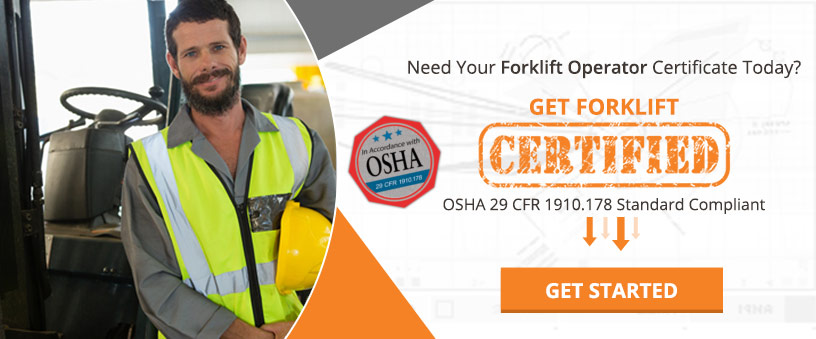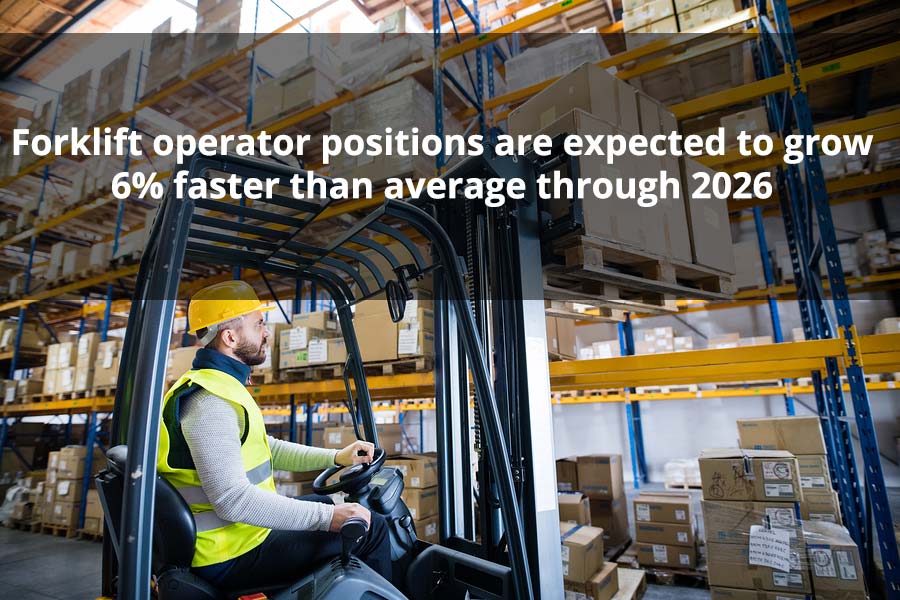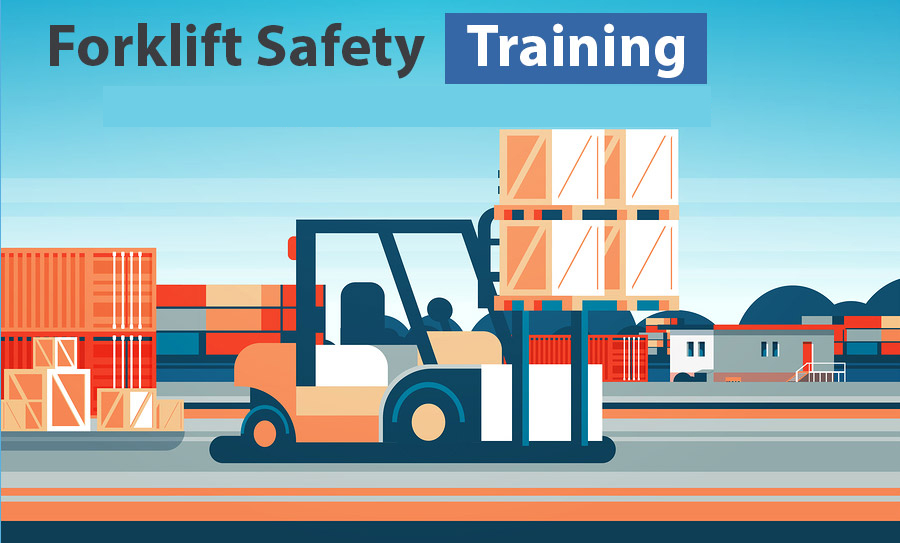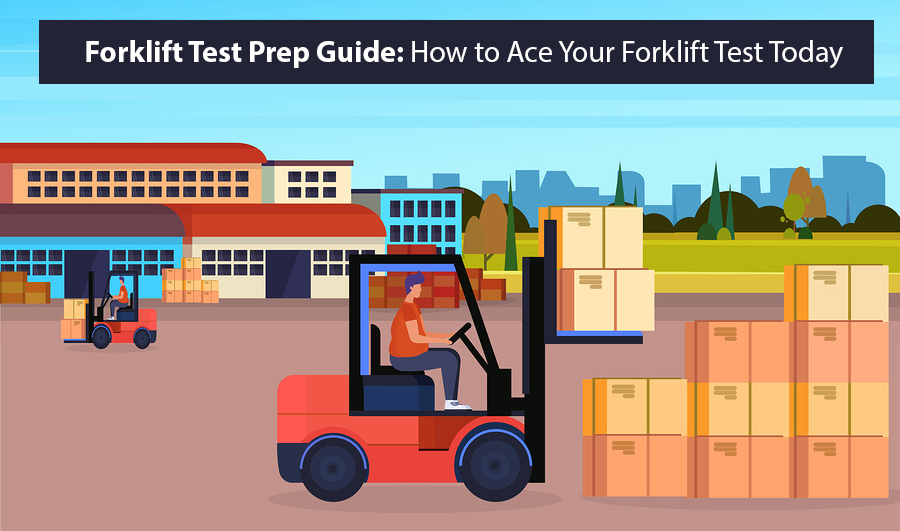Forklift Driver Certification – Understanding the Options for Earning One
Thinking about finding a job with plenty of earnings potential and demand across virtually every industry? One of the few that fits the description is becoming a forklift driver. From carpet warehouses to big box stores and 3PL companies to international shipping firms, skilled forklift drivers are in tremendous demand today. In fact, the US Bureau of Labor Statistics points out that “material moving machine operator” positions are expected to grow 6% faster than average through 2026, with an additional 44,000 jobs being added between 2016 and 2026.
Of course, getting started on the right foot means knowing what is required of would-be drivers and what companies hiring for these positions want to see in an applicant. Perhaps the single most important thing is to earn your forklift driver certification – OSHA requires that material moving machine operators (their term for forklift drivers, as well as other similar positions) complete a compliant forklift training course to earn their certification.
Is It Really a “License”?
There’s a notion that forklift drivers must be licensed in order to operate these machines. While the language used by OSHA and the National Safety Council might sound like they’re talking about actual licensure, similar to what drivers must go through before they can legally operate a passenger vehicle on the road, that’s not the case. We’re talking about certification, not licensure. There is no actual license required to be a forklift operator, and companies cannot be dinged by the government for not having “licensed” operators. However, employers have the option of issuing a license to certified operators if they feel it is important to do so.
What’s Involved with Forklift Driver Certification?
First, understand that OSHA’s training mandate doesn’t actually apply to job seekers. Rather, it’s focused on employers. The actual wording of OSHA’s mandate states, “The standard requires employers to develop and implement a training program based on the general principles of safe truck operation, the types of vehicle(s) being used in the workplace, the hazards of the workplace created by the use of the vehicle(s), and the general safety requirements of the OSHA standard.”
What does that mean for job seekers? Are you off the hook when it comes to finding forklift driver certification courses? Technically, yes. However, don’t take that to heart. Remember that while there’s lots of growth in this field, there is also lots of competition.
You need to make sure that you are the most attractive candidate, and that should probably include having passed your forklift driver certification course on your own. Employers will see this as a major mark in your favor, as it means they do not have to worry about investing the time and money necessary to train and certify you.
For employers, training must be comprehensive and structured around both your facility and the list of topics and training areas provided by OSHA. However, note that you can exclude any areas and topics that are not relevant to your facility or to the individual being trained. For instance, if your facility uses three types of forklifts, but the individual in question will only be required to operate one type, then all training should focus on that one type of forklift, and there is no need to train them on the other two types used at your facility unless they will be expected to use those types of forklifts.
There are two primary steps involved with certification:
Forklift Theory and Knowledge Component
This teaches operators forklift fundamentals, safety guidelines, maintenance and inspections, and legislative requirements. This must also include a knowledge evaluation to ensure operators have understood and retained the information presented.
Workplace-Specific and Practical Training
This is on-the-job training in the workplace where the operators will be performing tasks. This is where they’ll learn about the specific hazards in a workplace as well as how to operate the equipment as safely and efficiently as possible. This will also conclude with a practical evaluation to confirm the operator possesses the required skills.
Onsite or Online Training?
When it comes to forklift driver certification, there are two primary options available. You can complete training in a classroom setting, or you can opt for online forklift driver training. Both are worthwhile considerations, but they are very different.
Classroom training can be time-consuming and challenging. It requires that testers take time out of their regular schedule not only for training purposes but also to drive to and from the location where training is held. Online training can be completed from any location with an Internet connection and can be done on a PC, laptop, or even a tablet computer. That saves time and hassle, certainly.
For individuals, online forklift certification training allows you to get a jump on the competition. It ensures that an employer can simply evaluate your real-world skills and your resume and then make a decision.
For employers, online training offers many additional benefits. It streamlines the hiring process, certainly, but it also helps ensure that you’re hiring the most qualified candidates.
Allowing existing employees access to a qualified online forklift certification course certainly simplifies that process and ensures that you can monitor them during a brief performance test afterward and re-certify them for another three years. It’s even important for refresher training for drivers who might have had accidents while operating a forklift.
In the end, obtaining a forklift driver certification is relatively simple and straightforward. Individual job seekers are urged to take advantage of online resources to make themselves the most attractive candidates and earn their certification before applying for a job. Employers are recommended to use online forklift training tools to streamline the onboarding and re-certification processes.






